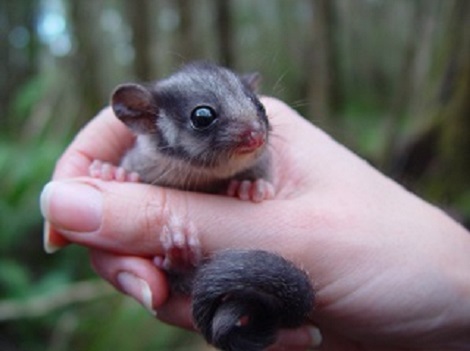Leadbeater's Possum is Victoria’s faunal emblem. It is listed as Critically Endangered under the Victorian Flora and Fauna Guarantee Act 1988 (FFG Act) and the Commonwealth Environment Protection and Biodiversity Conservation Act 1999 (EPBC Act).
Distribution and ecology
There are two distinct subpopulations of Leadbeater’s Possum in Victoria, highland and lowland. The very small lowland population is found only in Yellingbo Nature Conservation Reserve, alongside our other Faunal Emblem species, the Helmeted Honeyeater.
Highland populations of Leadbeater’s possums are found further east, in the tall, wet forests of Victoria’s Central Highlands. A population was discovered in June 2025 in the Kosciusko National Park, New South Wales. This is the only known population outside Victoria.

These possums rely on tree hollows, in which small colonies of up to 12 will sleep together. Colonies have one monogamous breeding pair, that may produce up to two young each year. The Leadbeater’s Possum society is very territorial and matriarchal. The female is aggressive and will expel outsiders and younger females from the group.
The possums build large intricate shredded back nests in multiple hollows across their territory, and are known as ‘forest fairies’ as they flit and dart across the treetops at night searching for food. Possums emerge from their nests at dusk to forage through the sub canopy, leaping from tree to tree to search for food. They feed on wattle sap, lerps and insects, which they find hiding under loose bark on eucalypt trees.
Threats and recovery actions
Threats to the species include increased frequency and intensity of droughts, altered fire regimes, introduced species such as weeds and deer that impact habitat condition, foxes and feral cats that predate on the species, loss of genetic diversity and population fragmentation.
An FFG Act action statement and National Recovery Plan guide conservation efforts for the species. These efforts include:
- habitat protection and restoration
- monitoring of the species, its habitat and threats
- research into climate change, changes to forest structure on the species and its habitat and genetics
- translocations of the lowland sub species into secure, managed habitat
- control of introduced species (weeds, foxes, feral cats and deer)
- disease and health assessments of captive and wild animals
- advancements in captive breeding.
Who's helping?
Conserving Victoria's threatened species requires a collaborative approach. In addition to many volunteers, there are a number of organisations working to help with the protection and recovery of Leadbeater's Possum. These include:
- DEECA’s Arthur Rylah Institute
- Greening Australia
- Melbourne Water
- Parks Victoria
- Trust for Nature
- University of Melbourne
- Zoos Victoria
The Victorian Government has invested in a range of targeted actions that assist Leadbeater’s Possum populations directly, as well as protecting and restoring crucial habitat. These actions include habitat enhancement, control of introduced species, research, monitoring, translocations, and support for the conservation breeding program. See the Faunal Emblems Program for further information.
Page last updated: 05/11/25